
João Francisco Silva, known professionally as John D' Silva, is an Indian actor, comedian, playwright, and director known for his work in Konkani films and tiatr productions. Referred to as the "Emperor of the Konkani stage", he is the first tiatrist to enter the Limca Book of Records in 2010 for acting, writing, directing and producing 25 tiatrs having a double alphabet in their titles.

Alegre Roque Teodoro Antao, known professionally as Star of Arossim, was an Indian singer, composer, dramatist, director, and actor who primarily worked on the Konkani stage. Regarded as a multifaceted artiste and one of the stalwarts of the Konkani stage. A skilled bongo and conga player, he is best known for being part of the Bomboikar Group for their biannual shows.
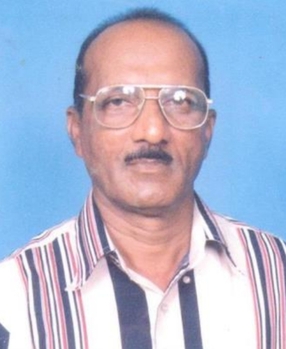
Vicente Florenco Fernandes, known professionally as Star of Curtorim or Seza Pai, was an Indian theatre director, dramatist, actor and composer, who primarily worked on the Konkani stage. He is best known for his tiatrSeza Pai (1976) which he staged along with Nelson Afonso during the golden phase.

Joao Piedade Inacio Loyola Pinheiro, known pseudonymously as JoeGoaUK, is a Portuguese correspondent, photographer, photojournalist, and online activist. Referred to in the media as the "Scarlet Pimpernel of Goan social media" and the "Banksy of Goa," he has made significant contributions to the online sphere over the course of nearly two decades. Pinheiro's contributions include sharing a vast collection of photographs and videos that span various genres, including citizen journalism, cultural documentation, political commentary, Konkani Mog, locavore connoisseurship, and train spotting enthusiasm.
The Yuva Srujan Puraskar (Navsarjan Chetana Puraskar) is an annual award conferred by the Department of Art and Culture of the Government of Goa. The main objective of this award is recognizing and observing the achievements of young individuals hailing from Goa who have demonstrated exemplary prowess in the domain of art and culture.
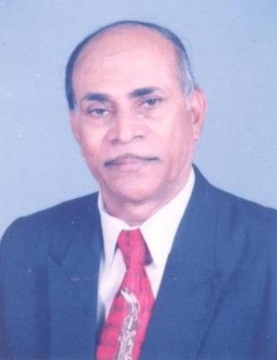
Josinho D'Souza, known professionally as Maestro Josinho, was an Indian saxophonist and playwright who worked on the Konkani stage. Described by The Navhind Times as a leading saxophonist in tiatrs, D'Souza is regarded as one of the stalwarts of the Konkani stage. Throughout his career spanning over five decades, his music has been featured in approximately 3000 tiatrs and 250 audio cassettes.

John Claro Fernandes is an Indian writer, theatre director, playwright, and actor known for his work in tiatr productions. Throughout his extensive career, he has made crucial contributions to the development and advancement of Goan tiatr. His noted research on the history of tiatr led to the discovery that the inaugural tiatr production, titled Italian Bhurgo, took place on 17 April 1892, at the New Alfred Theatre in Bombay, presently occupied by the Police Commissioner headquarters.

Ophelia Cabral e D'Souza, popularly known as Ophelia Cabral, was an Indian actress, singer, playwright, and director known for her work in Konkani films and tiatr productions. One of the multifaceted performers of her time, she is referred to as the "Tragedy Queen of the Konkani stage" and was known for her roles in Konkani films such as Amchem Noxib, Nirmon, Boglantt, Bhuierantlo Munis, and Faxi Mogachi.
Patrocicio "Patrick" Dourado is an Indian playwright, theatre director, singer, composer, and ghostwriter known for his work in Konkani films and tiatr (theatre) productions. In a career span of more than six decades, he has written scripts for more than 100 tiatrs, starting in 1957 at the age of 18.
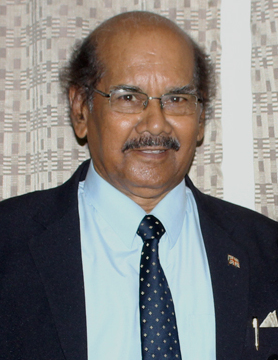
Santana Filomena Ceirico Camilo "Cyriaco" Dias is an Indian actor, playwright, theatre director, singer, freedom fighter, and social worker known for his work in Konkani films and tiatr productions. Throughout his career, he has performed in over 1,000 dramas and has accumulated over 4,500 acting credits.

Conceicão Diogo da Silva , known professionally as Connie M, is an Indian singer, actor, drummer, and playwright who works on the Konkani stage.

Wilson Vincent Mazarello, also known as Wilmix, is an Indian singer, writer, playwright, and politician known for his work in Konkani films, and tiatr productions.

Shalini Mardolkar was an Indian actress, singer, playwright, and director known for her work in Hindi, Konkani films, and tiatr productions. In the Konkani theatre scene, she is best known for her portrayal of Mother Mary in J. P. Souzalin's tiatr Saibinnicheo Sat Dukhi.

Cajetan Francis Pinto, known mononymously as Caiti, was an Indian make-up artist who worked on the Konkani stage.
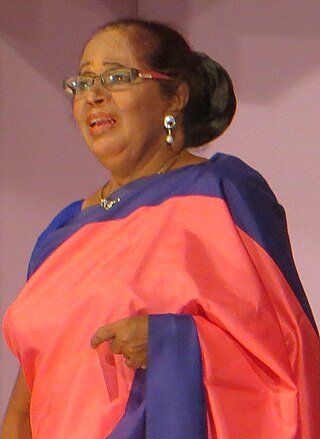
Eusebia Feliciana "Sabina" Fernandes is an Indian actress, singer, theatrical producer, and theatre director known for her work in Konkani films and tiatr productions.

Mary Rosalia Agnela Odette Rodrigues, known professionally as Rosalia Rodrigues, was an Indian theatre actress and singer who worked on the Konkani stage.

Ambrose Carlisto Piedade Fernandes known professionally as A. M. B. Rose, was an Indian theatre actor, singer, theatre director, and playwright who worked on the Konkani stage. One of the early character actors of the Konkani tiatr stage, he gained fame during the golden phase of tiatr from the 1930s to 1970s. The patriarch of the 'Rose family', his son Alfred Rose followed in his footsteps to become a Konkani singer. Fernandes's family talents extended to his daughter-in-law Rita Rose, who made similar contributions to the Konkani stage like her husband Alfred, which inturn helped their children to become Konkani singers.

The Gomant Vidya Niketan (GVN) is a private cultural center based in Comba, Goa, India. Established in 1912, it was originally founded as the Saraswat Brahman Samaj, a small library. Over time, the organization has expanded its scope and focus. Following the Liberation of Goa in 1961, the organization was renamed to its current appellation. This change in name coincided with an elevation in the center's status, transforming it from a library into a broader cultural hub. The primary activities of the organization revolve around the promotion and hosting of cultural events and programs related to the Konkani and Marathi heritage. Gomant Vidya Niketan stands out as the longest-standing socio-cultural establishment in South Goa.

The Ravindra Bhavan, Margao (RBM) is a cultural center situated in Fatorda, Goa, India. It is administered by the Directorate of Art and Culture, which is part of the Government of Goa. The center was founded in July 2008 and was inaugurated under the governance of the Congress party in Goa at the time. It serves as a venue for a diverse range of cultural activities and events, featuring programs and performances in languages such as Konkani, English, Hindi, and Marathi. In addition to hosting local cultural programming, the center serves as a prominent venue that hosts a variety of important national and international events. It functions as a central nexus for a wide range of cultural events and activities within the Salcete taluka district of South Goa.
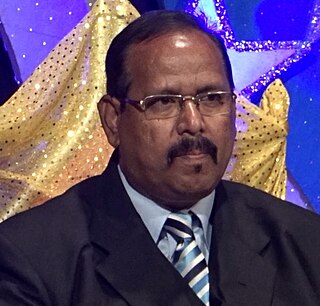
Cezar Aleixo Jose Fernandes de Melo, better known as Cezar D'Mello, is an Indian playwright, theatre director, actor, singer, dancer, and former amateur footballer known for his work in Hindi, Konkani films, television, tiatr productions, and folk plays.



















